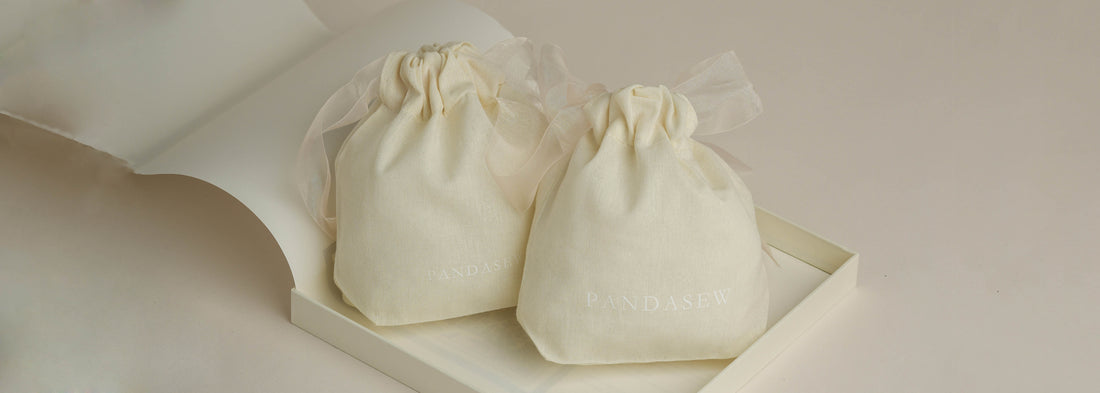
Sustainable Jewelry Packaging
In the dynamic realm of jewelry, where trends ebb and flow, sustainability in packaging has emerged as a crucial factor.
The Shift Towards Sustainable Packaging in the Jewelry Industry
The jewelry sector, much like other industries, has come under scrutiny for its environmental footprint. Traditional jewelry packaging often relies on non-renewable materials like plastic-coated paper, synthetic fabrics, and excessive cardboard. These materials not only contribute to deforestation and plastic pollution but also have a high carbon footprint during production and transportation.
However, with the growing awareness of climate change and the pressing need for environmental conservation, jewelry brands on both sides of the Atlantic are taking decisive action. Sustainable packaging is no longer a luxury; it's a necessity. Brands are now seeking ways to reduce their environmental impact while maintaining the elegance and protective qualities essential for jewelry packaging.
Why Cotton Bags are an Ideal Choice for Jewelry Packaging
1. Eco-Friendliness
Cotton, a natural fiber, makes cotton bags an incredibly sustainable option. They are biodegradable, meaning that at the end of their life cycle, they break down naturally without leaving harmful residues in the environment. Unlike plastic bags, which can take centuries to decompose, cotton bags can degrade within a few months to a few years, depending on environmental conditions. This aligns perfectly with the environmental values held dear by American and European consumers.
2. Reusability
One of the most compelling advantages of cotton bags is their reusability. Once customers in the US and Europe receive their jewelry in these bags, they can repurpose them for various uses. They can be used as shopping bags for groceries or small items, storage bags for jewelry or other valuables, or even as gift bags for special occasions. This reusability not only reduces waste but also extends the lifespan of the packaging, making it a cost-effective choice in the long run for both brands and consumers.
3. Softness and Protection
Jewelry is delicate and requires careful handling and protection. Cotton bags, with their soft fabric, are ideal for safeguarding jewelry. The natural fibers of cotton provide a gentle cushioning effect, ensuring that necklaces, earrings, rings, and other jewelry pieces remain in pristine condition during storage and transportation. Whether it's a delicate diamond necklace in New York or a hand-crafted silver ring in Paris, a cotton bag can keep it safe.
4. Customization Options
For jewelry brands aiming to make a unique statement in the US and European markets, cotton bags offer a plethora of customization options. Brands can print their logo, brand colors, and other branding elements on the bags. Embroidery is also a popular choice, adding a touch of luxury and sophistication. With the ability to customize the design, size, and color of the cotton bag, jewelry brands can create a packaging solution that is both sustainable and reflective of their brand identity.
New Initiatives in Using Cotton Bags for Jewelry Packaging
1. Brand-Specific Cotton Bag Collections
Numerous jewelry brands in America and Europe are now launching their own exclusive cotton bag collections. These collections are designed not only to package jewelry but also to communicate the brand's commitment to sustainability. For example, some high-end brands in California are using organic cotton in their bags, which is grown without pesticides and synthetic fertilizers. This not only makes the bags more environmentally friendly but also appeals to health - and - environment-conscious consumers. Similarly, in Europe, brands in Italy are using cotton sourced from local farmers, supporting the local economy while promoting sustainability.
2. Collaborations with Sustainable Fashion Brands
Collaborations between jewelry brands and sustainable fashion brands are also on the rise. In New York, jewelry designers are teaming up with eco-fashion labels to create innovative cotton bag designs. These collaborations blend the expertise of both industries to produce packaging that is both functional and stylish. The fashion brand's design aesthetic can be incorporated into the cotton bag, making it a desirable item in its own right. In Europe, similar collaborations in London and Paris are not only promoting sustainability but also giving jewelry brands a competitive edge in the market.
3. Cotton Bag Subscription Services
Some jewelry retailers in the US and Europe are exploring the concept of cotton bag subscription services. In the United States, customers in major cities like Chicago can subscribe to receive a regular supply of cotton bags for all their jewelry purchases. This encourages customers to reuse the bags and fosters brand loyalty. In Europe, a similar model is being tested in Berlin, where customers can sign up for a subscription that not only provides them with cotton bags but also offers exclusive discounts on jewelry purchases. It's a win-win situation, as the brand promotes sustainability, and the customer gets a convenient and eco-friendly packaging solution.
Challenges in Implementing Cotton Bags for Jewelry Packaging
1. Cost-Effectiveness
One of the primary challenges that jewelry brands in America and Europe face when transitioning to cotton bags is the cost. While cotton bags can be cost-effective in the long term due to their reusability, the initial investment is often higher than that of traditional packaging materials. The cost of high-quality cotton, especially organic cotton, and the expenses associated with customization can add up. However, as the demand for sustainable packaging continues to grow in both regions, economies of scale are likely to reduce costs over time.
2. Durability Concerns
Although cotton bags are generally durable, there are concerns about their long-term durability, especially when used to package heavy or sharp-edged jewelry. Brands need to ensure that the cotton bags they select are made of thick and sturdy fabric to withstand the weight and potential damage from the jewelry. In addition, providing clear care instructions to customers in the US and Europe is essential to ensure that the bags last as long as possible.
3. Storage and Transportation Space
Cotton bags, especially when not folded properly, can take up more storage and transportation space compared to flat-packed plastic or paper packaging. This can be a challenge for jewelry brands with limited storage space, whether they are small boutiques in Boston or large-scale distributors in Frankfurt. However, with the development of innovative folding and storage solutions, such as compact folding designs and space-saving storage systems, this challenge can be overcome.
The Versatility of Cotton in Different Product Packaging
Beyond jewelry, cotton products prove to be a remarkable packaging alternative for a wide array of items. Take handbags, for instance. Luxury handbag brands can utilize cotton dust bags to protect their products during storage and transit. These bags not only shield the handbags from dust and scratches but also add an element of elegance. The natural texture of cotton complements the high-end aesthetic of the handbags, and customers can reuse these bags to store their handbags at home, reducing the need for plastic or synthetic storage solutions.
Come to our store, easy to meet your request.
